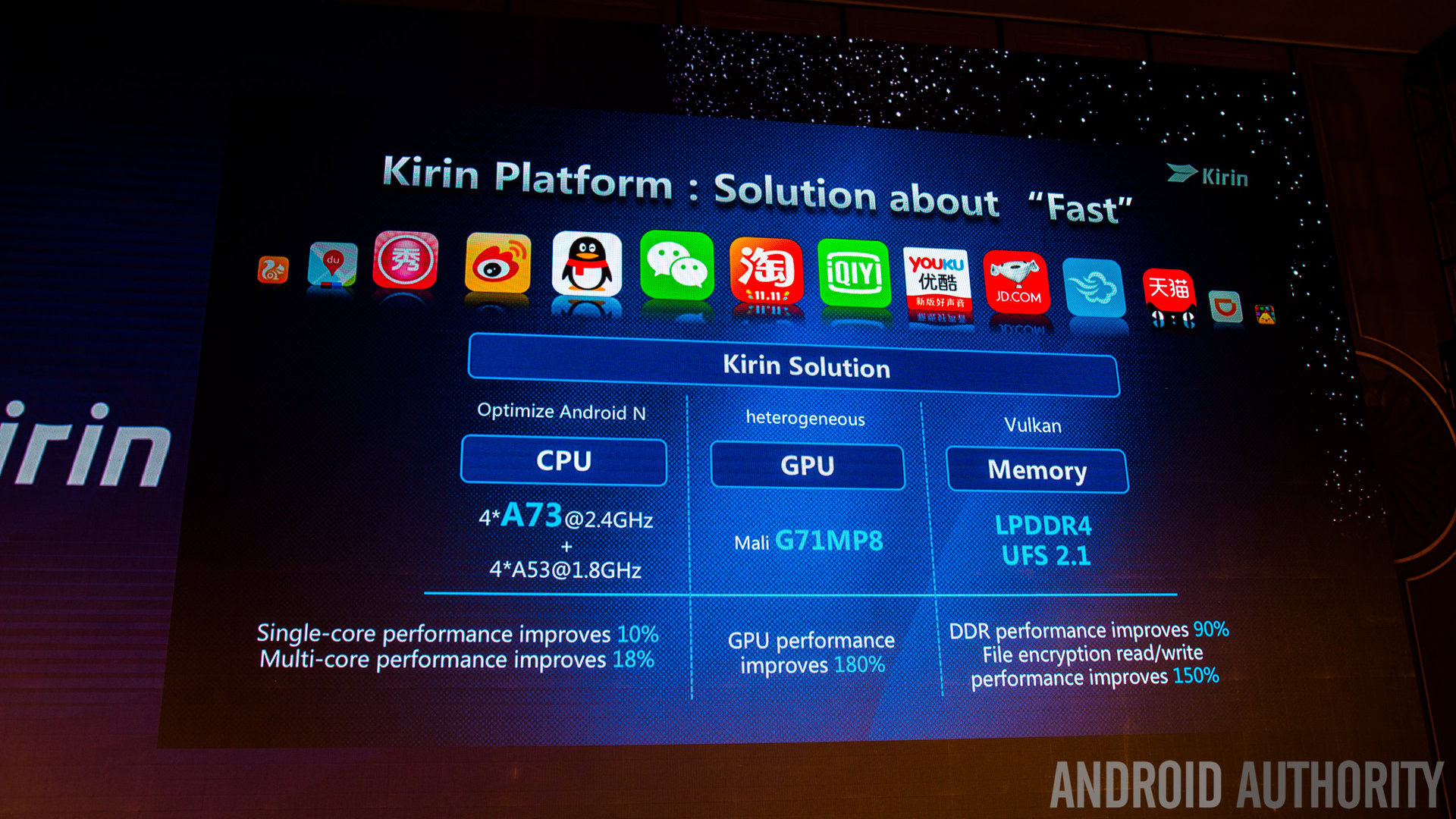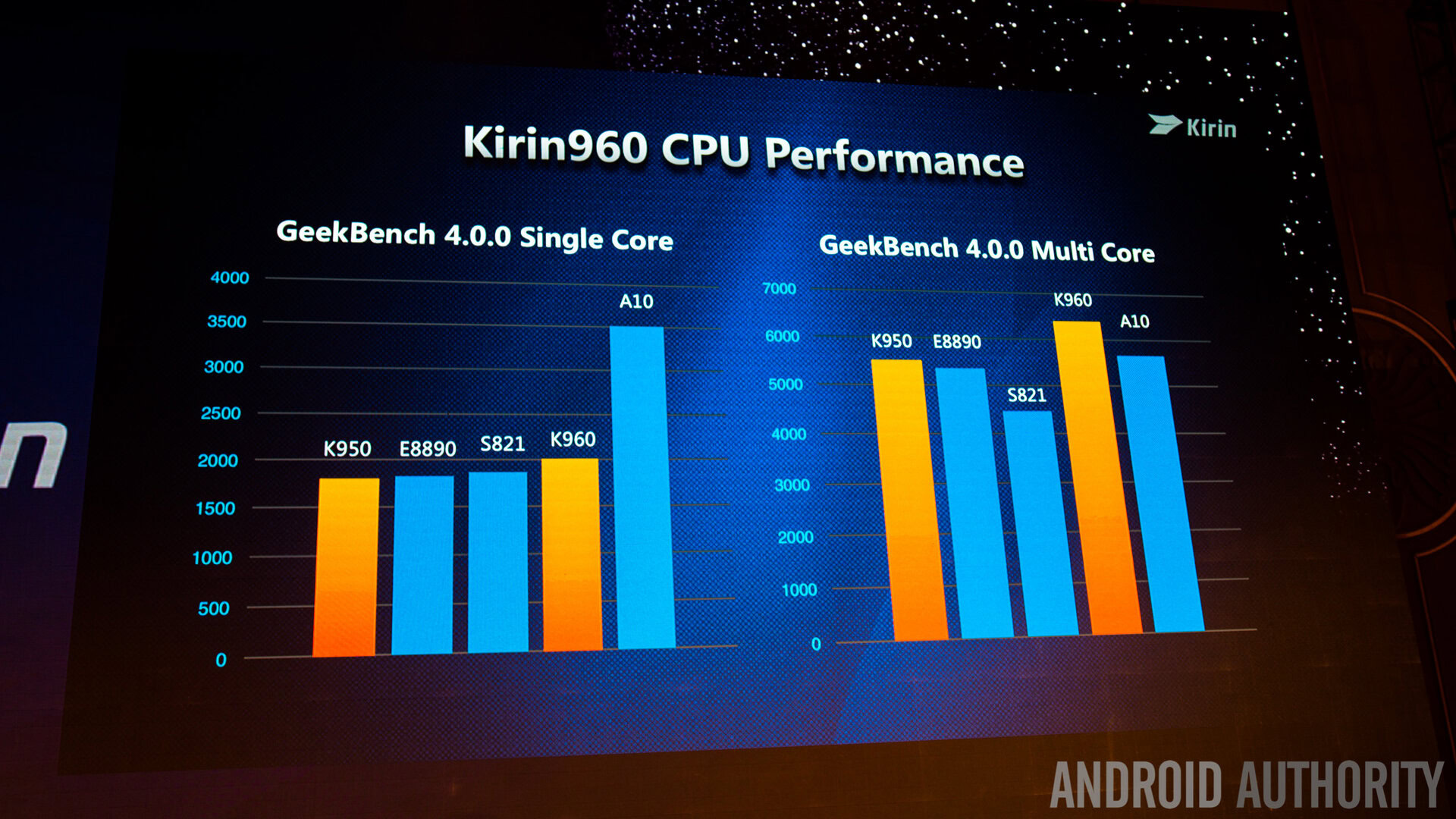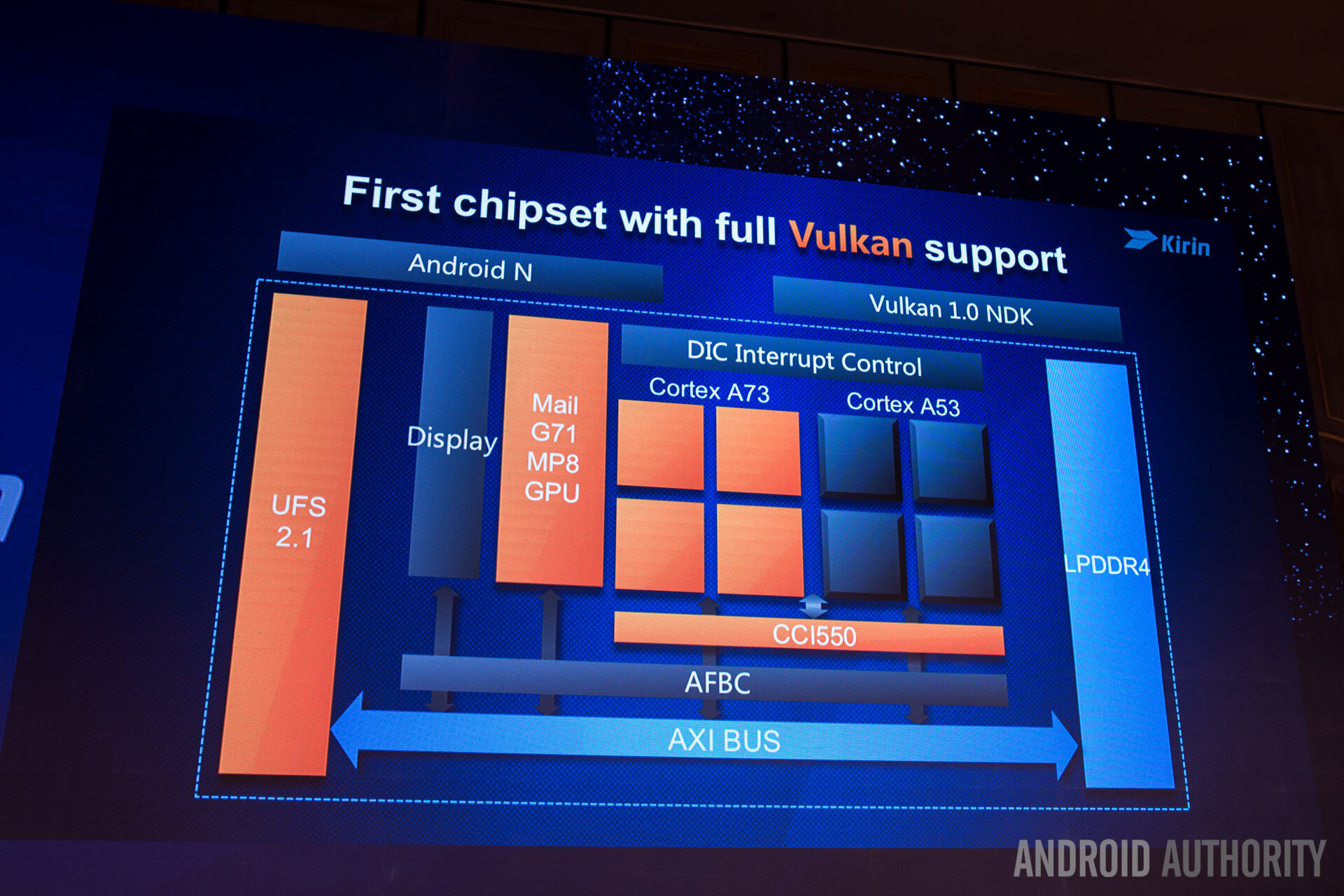Affiliate links on Android Authority may earn us a commission. Learn more.
HUAWEI introduces next-generation Kirin 960 chipset

At a media briefing here in China today, HUAWEI unwrapped its new HiSilicon Kirin 960 chipset, which is expected to power its upcoming rumoured smartphone for next month. Featuring the latest generation Mali GPU, fastest ARM CPU cores and upgraded networking technology, the Kirin 960 promises several advancements over previous generations, and rival processors.
The Kirin 960 is made up of four high-performance ARM Cortex A73 cores at 2.4GHz alongside four low-power Cortex A53 cores clocked at 1.8GHz, and built using a 16nm manufacturing process. The Kirin 960 is also the first processor to use the new Mali-G71 MP8 GPU, which is rumoured to be inside the Galaxy S8 next year.

During the briefing, HUAWEI took the example of benchmark scores and showed that while the A10 Fusion chipset inside the iPhone 7 and iPhone 7 Plus is faster in a single-core test, the Kirin 960 leads the way in multi-core testing. However, HUAWEI says that faster random read/write speeds thanks to UFS 2.1 storage allows the Kirin 960 to ‘feel faster‘ than other chipsets.
[aa_content_ad aa_single_ad_type=”single_mobile” aa_single_ad_pos=”center” ][/aa_content_ad]
[aa_content_ad aa_single_ad_type=”single_750_more” aa_single_ad_pos=”center” ][/aa_content_ad]
The Mali-G71 MP8 GPU also brings much needed improvements to the gaming element of the user experience, with performance 180% faster than the previous generation Mali-T880 GPU used inside previous Kirin chipsets (and other devices). Combined with support for Vulkan support, this allows the chipset to support much better gaming (40 FPS vs 10FPS on previous GPUs) while also ensuring the load on the CPU doesn’t create a bottleneck that affects the user experience. HUAWEI went further to say that in its own testing, out of the most popular 14 apps used in China, the Kirin 960 was the fastest to open 13 of them when compared with the competition.
The Kirin 960 also brings native CDMA support, allowing it to be compatible with markets where CDMA and 2G services are still in operation, whereas previously HUAWEI would have had to license from Qualcomm. The Kirin 960 also brings support for 4 component carriers (4CC) for LTE versus 3CC on other chipsets, which essentially adds extra channels for data throughput, ensures a much wider range and makes it much easier to hit peak data speeds of 600Mbps.
The Kirin 960 also offers Cat 12 LTE download speeds and Cat 13 upload, as well as the widest range of radio frequencies; supporting the spectrum from 330MHz to 3.8GHz opens up support for a wide range of global carriers and essentially means your phone should work in every global market. The improvements don’t stop there as HUAWEI has also improved radio performance for specific challenging situations such as data usage on a high-speed train and boasts 100% reliability (whereas rivals only ever achieve up to 99% and usually a lot lower).
The new ISP brings smartphone cameras 'closer to the vision of the human eye'
Like most chipset manufacturers, HUAWEI has focused heavily on battery life and through its work with partners, the Kirin 960 offers much better battery life. Using Pokemon Go as an example, HUAWEI said the i6 inside the Kirin 960 allows users to go from just half a day’s battery life when playing Pokemon Go to 1.2 days thanks to the improvements, which include low-power GPS. Essentially, the i6 core allows you to experience much better battery life without changing your habits.

Security is also a major focus in the Kirin 960, with HUAWEI boasting the new chipset is certified by both UnionPay and the People’s Bank of China’s new digital requirements for mobile payments. The biggest difference in the Kirin 960 is that mobile payments are embedded into the SoC itself alongside over 4 billion transistors making it more difficult for thieves to crack encryption. In a video, the company showed that it’s theoretically possible for hackers to remove a security chipset from a phone to access the data but having a security design that embeds into the chipset itself makes this less appealing.
[aa_content_ad aa_single_ad_type=”single_mobile” aa_single_ad_pos=”center” ][/aa_content_ad]
[aa_content_ad aa_single_ad_type=”single_750_more” aa_single_ad_pos=”center” ][/aa_content_ad]
The security improvements also include a new 3-tier security system that makes it harder to crack the encryption and support for financial industry standard encryption. HUAWEI also says it aims to obtain certification from foreign bodies for its security solutions, presumably so it’s able to offer mobile payment services in other markets as well. HUAWEI hasn’t revealed which handsets will use the new chipset but presumably, the first handset will be the rumoured Mate 9 when it’s announced on November 3 in Munich, Germany. We’ll be there bringing you all the info so stay tuned and we’ll also have a deep dive looking at the Kirin 960 in a lot more detail in the very near future!